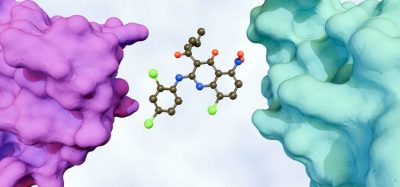How modern chromatography data systems are improving regulatory compliance in pharmaceutical manufacturing
Posted: 28 April 2020 | Dr Kyle D’Silva (Thermo Fisher Scientific), Theresa Webster (Broughton Laboratories) | No comments yet
Delivering confident QA and QC in pharmaceutical manufacturing is of critical importance. This article discusses how the latest chromatography data systems are ensuring compliance with modern regulatory requirements.


ROBUST QUALITY assurance (QA) and quality control (QC) processes are essential for pharmaceutical companies to guarantee the release of safe and effective products. With patient safety at stake, ensuring reliability of the data in QA and QC workflows has long been a key priority for the pharmaceutical industry. However, as regulatory bodies such as the US Food and Drug Administration (FDA) and the UK’s Medicines and Healthcare products Regulatory Agency (MHRA) place additional focus on the accuracy, completeness and consistency of pharmaceutical manufacturing data, companies need efficient ways to securely maintain the integrity of their information and demonstrate the highest levels of compliance.
As QA and QC workflows involve analytical processes that generate large volumes of chromatography data, it is critical that companies employ appropriate methods and tools to collect, manage and store this complex information. To satisfy regulatory requirements, data management systems must be sufficiently robust to guarantee reliability and consistency, as well as allowing full traceability and transparency. Despite this, many companies employ fragmented approaches to chromatography data management, which can make ensuring regulatory compliance challenging. In this article, we discuss the limitations of fragmented approaches to chromatography workflow management and highlight how one pharmaceutical laboratory brought its data management processes under a single chromatography data system (CDS) to improve both data quality and transparency across its data collection processes.
The limitations of fragmented chromatography data management
CDS solutions form the backbone of data management in most chromatography workflows, facilitating the automation of instrument control, data acquisition, results processing and reporting. However, many laboratories do not use these systems to fully integrate and automate their workflows. Instead, separate CDS solutions are often used by individual teams, or employed alongside partially paper-based data storage systems or spreadsheets, essentially resulting in a disjointed approach to data management. Furthermore, since many CDS solutions were originally designed for the research laboratory rather than the regulated environment or were introduced before the recent focus on data integrity, many pharmaceutical manufacturers do not have the digital architecture or functionality to easily facilitate compliance.
Regulatory authorities now require end-to-end traceability for chromatography workflows”
There are multiple reasons why it can be difficult to achieve the high standards of data integrity required for regulatory compliance using these fragmented or less sophisticated systems. Firstly, it can be challenging to reach the appropriate levels of data consistency and reliability. In particular, differences in how individual users integrate chromatogram peaks can be a major source of variability in chromatography workflows. Manual integration is often difficult to standardise and is complicated by overlapping peaks, poor peak symmetry or high levels of background noise. Auditors expect laboratories to demonstrate appropriate procedures to control and justify the use of manual integration, but this task is made more challenging if chromatography data is not organised centrally.
Fragmented CDS solutions can also make it difficult to ensure transparent accountability across manufacturing workflows. Regulatory authorities now require end-to-end traceability for chromatography workflows and the association of raw data with contextual metadata such as analyst identity, method details, reference standards and details of any changes or deletions made. However, achieving this using paper-based approaches or spreadsheets is far from straightforward and harmonising secure data storage between different systems presents a significant challenge. Indeed, if data is stored across disparate systems or recorded in multiple formats it can be a time-consuming process to recall all the information required to demonstrate compliance in the event of an audit.
These issues demonstrate why it is challenging for manufacturers to ensure and demonstrate the standards of data integrity necessary to meet increasingly stringent regulatory standards. Therefore, the most forward-thinking manufacturers are replacing fragmented approaches to managing chromatography data with CDS solutions that are integrated across their entire workflow.
Integrating chromatography data management across QA and QC workflows to support efficient regulatory compliance
By using the latest CDS solutions to bring workflows, instruments and operators under a single system, pharmaceutical companies can now harmonise the management, processing and reporting of chromatography data. One way in which modern CDS systems achieve this is by enabling method parameters to be downloaded directly to instruments without the need for any user input. This helps to ensure that all operators use standardised procedures, effectively minimising user-to-user variability and reducing out-of-specification results. Furthermore, to help improve consistency in data analysis, the most advanced CDS solutions now incorporate powerful tools to facilitate automated peak integration. By employing sophisticated algorithms to process results, these tools can reliably distinguish true peaks from noise and correctly identify peak boundaries. This enables manufacturers to minimise the use of manual integration, enhancing data consistency and boosting efficiency.


While most CDS software will record this detailed information, the process of reviewing audit trails can be a laborious task. In response, many CDS platforms now offer enhanced audit trail functionality to streamline this process. For example, solutions might incorporate powerful filtering and search tools, allowing laboratory managers to search for specific events and quickly identify non-compliant behaviour such as injections that have been interrupted or repeated to obtain the desired result.
By using these solutions to manage their chromatography workflows, pharmaceutical manufacturers are better equipped to maintain the highest standards of data integrity and easily demonstrate regulatory compliance in an audit.
A case study: upgrading chromatography data management to boost productivity and demonstrate compliance
Analytical testing laboratory, Broughton Laboratories, needed to simplify their approach to managing chromatography workflow data by upgrading their CDS. As the company expanded, they faced growing data management challenges associated with higher sample throughput and the need to better co-ordinate their workflows and instruments, which were sourced from multiple vendors. To address these issues, Broughton sourced a solution compatible with all of their laboratories’ existing instruments.
Manufacturers need robust and reliable data management systems to guarantee and demonstrate regulatory compliance”
Achieving the highest levels of data consistency in routine analysis was a key priority for the laboratory. The new software helped to facilitate this by enabling the use of downloadable templates to set up analyses, ensuring that users could obtain reliable results using simplified workflows that minimised the number of manual steps. By applying these templates alongside other productivity tools, such as automated integration assistance, Broughton successfully streamlined their operations and halved the amount of time required to process data.
Another motivation for Broughton’s decision to bring their instruments, users and workflows together using a single CDS was to make it easier to demonstrate regulatory compliance. With their new system, the laboratory’s teams were able to quickly and easily review detailed audit trails and version history records, as all raw chromatographic data was clearly associated with the relevant methods and metadata. These features enabled them to reduce the administrative burden of successfully completing FDA and MHRA audits. Ultimately, by integrating chromatography data management across their entire workflow, they were able to boost productivity, enhance data consistency and quality and more efficiently demonstrate regulatory compliance.
Conclusion
With regulatory bodies increasing their focus on the integrity of chromatography workflow data, manufacturers need robust and reliable data management systems to guarantee and demonstrate regulatory compliance. The latest CDS software solutions provide the necessary functionality to help companies achieve this by fully integrating their workflows, instruments and operators under the same system. With a single, networked software platform, manufacturers are now able to safeguard the consistency and reliability of their data, guarantee full traceability and more easily recall all relevant information in the event of an audit. By employing these advanced solutions, pharmaceutical manufacturers can now achieve the highest standards of data integrity, while also boosting productivity.
About the authors













